Japan’s inflation report for January will attract more attention than usual following a sharp overshoot in Tokyo’s figures earlier this month.
With upstream price pressures building, the yen staying weak, and expectations for another strong pay increase for Japanese workers this year, the ducks are lining up for the Bank of Japan (BOJ) to lift interest rates again—possibly far sooner than many expect.
USD/JPY has shown a stronger negative correlation with short-term Japanese yields lately, meaning a hawkish BOJ surprise could see the yen rip higher.
USD/JPY Traders’ Eye Inflation Update
Japanese inflation reports don’t always spark major USD/JPY moves, but Friday’s release could break that pattern after Tokyo’s latest data pointed to persistent price pressures.
Core inflation in the capital jumped to 2.5% in January, the fastest pace in nearly a year, reinforcing expectations that the BOJ may need to continue hiking rates. The increase, which matched market forecasts, marked a third straight month of acceleration and kept inflation well above the BOJ’s 2% target. A separate measure stripping out both fresh food and fuel rose 1.9%, highlighting the broadening nature of price pressures.
If the nationwide inflation report follows Tokyo’s lead, it may strengthen the resolve of BOJ policymakers to keep lifting rates in the months ahead.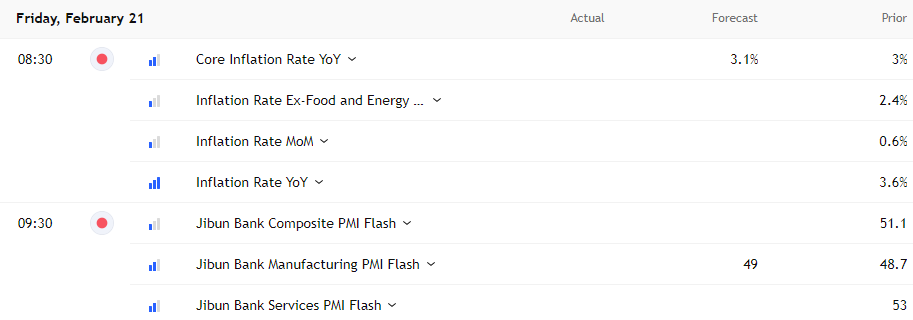
Source: TradingView
Persistent Price Pressures
Even before the data drops, it’s clear inflationary pressures remain persistent—both upstream and downstream—aligning with BOJ Governor Ueda’s recent comments that Japan is now experiencing inflation rather than deflation.
Monthly gains in underlying inflation, excluding energy and fresh food, have remained positive for several years. Producer price inflation, further up the supply chain, has followed a similar pattern, staying elevated compared to historical norms.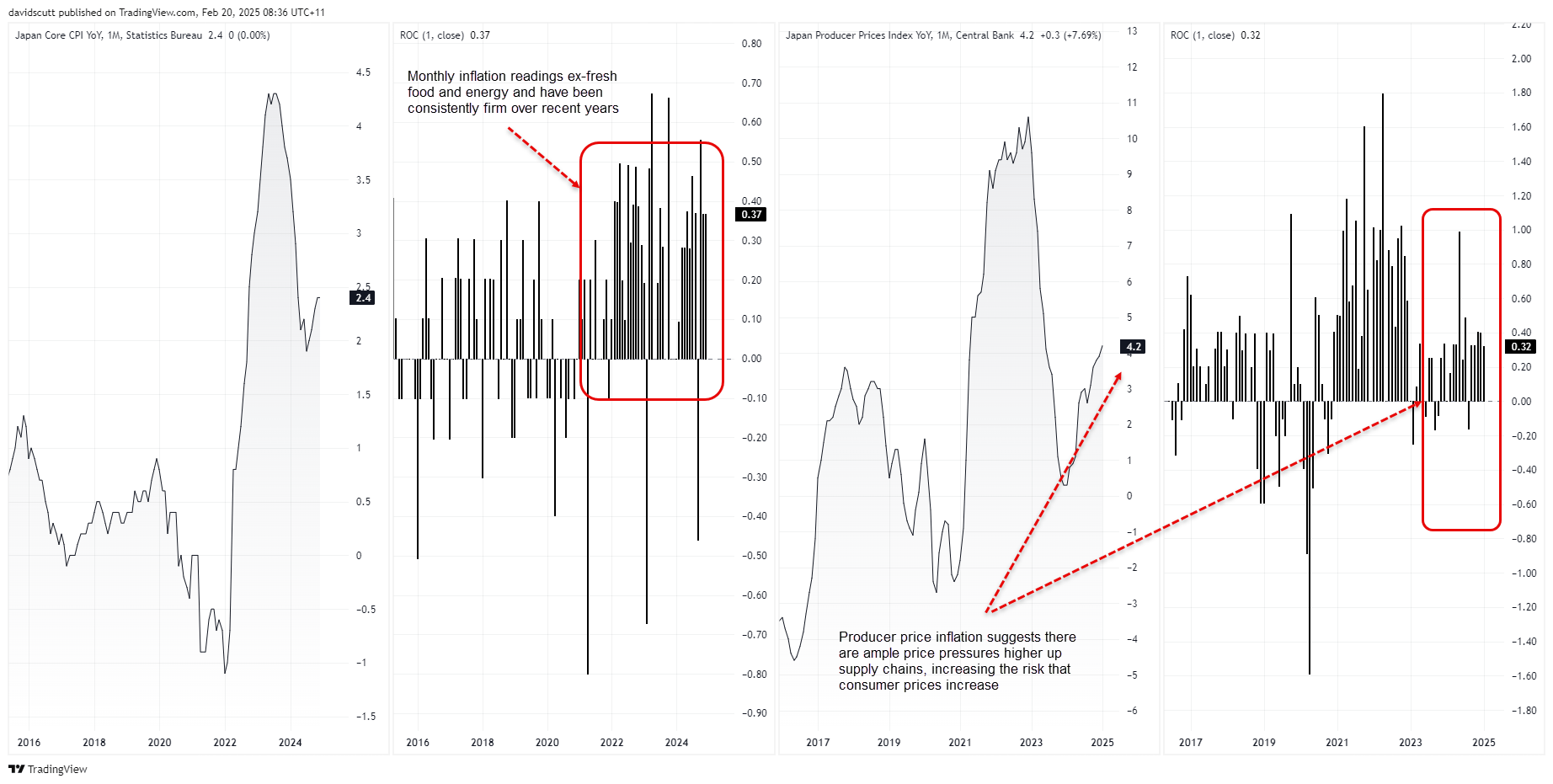
Source: TradingView
Japan’s Economy and Wages Heating Up
It’s not just inflation ticking higher—Japan’s economic data has been surprising to the upside too. Citi’s Economic Surprise Index shows a sharp improvement in Japanese data beats, hitting the highest levels in nearly a year despite the tightening already delivered by the BOJ. Meanwhile, US data exceptionalism has faded, with downside surprises becoming more common. This shift has helped USD/JPY unwind some of the massive gains of prior years.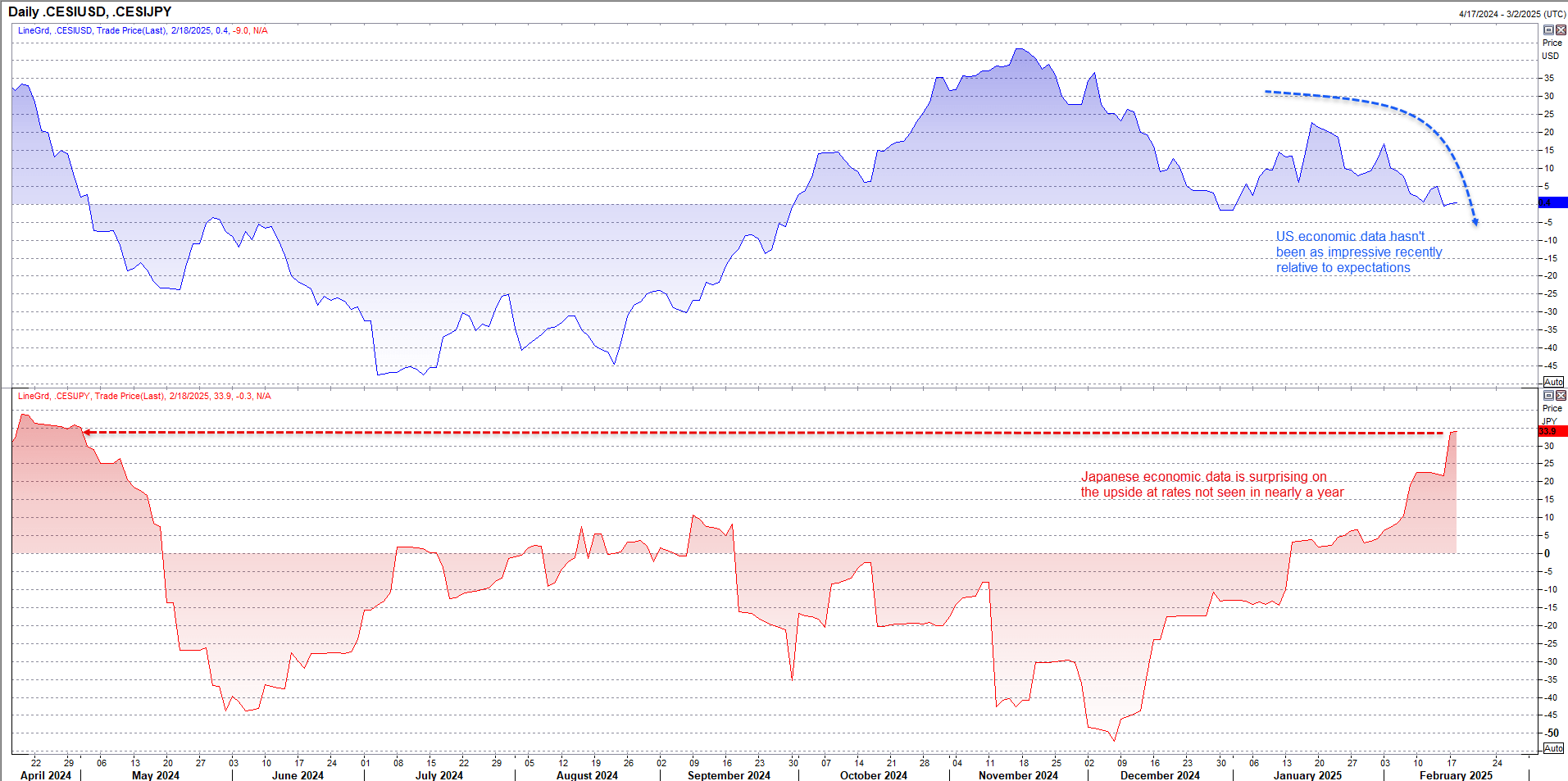
Source: Refinitiv
Adding to inflationary pressures, workers are likely to secure another significant real wage increase in this year’s Shuntō negotiations in March, Japan’s annual spring wage talks.
The event sees unions across major industries push for higher pay, with outcomes closely watched by the BOJ for inflation and policy implications. In 2024, unions secured their biggest pay hikes in decades, with large firms granting raises of over 5%. That played a key role in the BOJ’s decision to exit ultra-loose monetary policy, lifting policy rates out of negative territory.
This year, another strong round of wage gains is expected. Japan’s Trade Union Confederation (Rengo) is pushing for hikes of more than 5% at large firms and over 6% at smaller and midsize enterprises.
BOJ Rate Hike Risk Underdone?
Despite the prospect of another round of large real wage increases, Japanese swaps markets aren’t fully pricing in another 25bp BOJ hike until September, with the chance of a second hike by year-end sitting around 40%.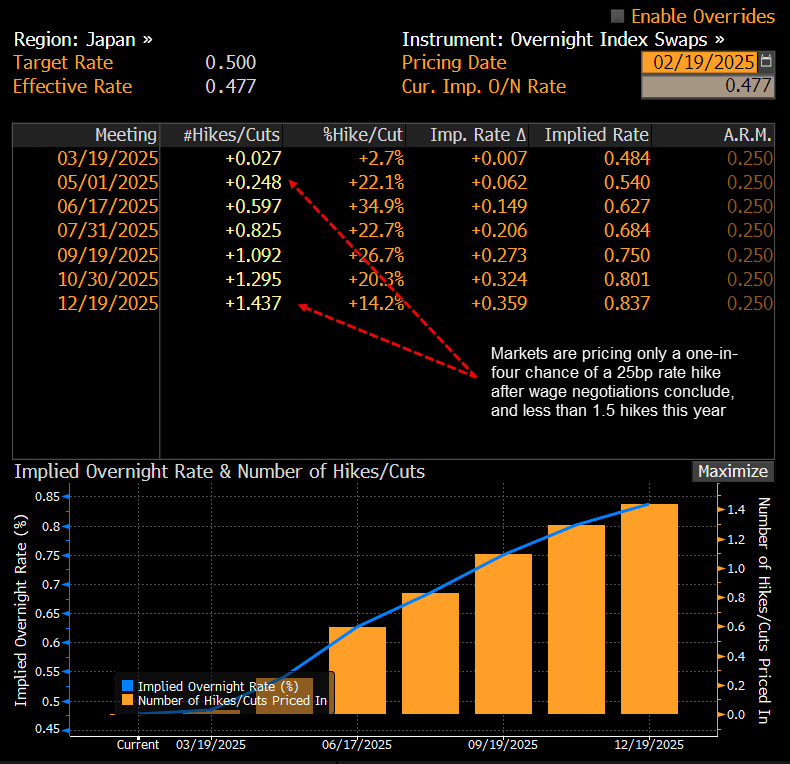
Source: Bloomberg
For May—after Shuntō negotiations conclude—the implied probability of a 25bp hike is just one in four. That looks skinny given strong trends across the Japanese economy, along with increasingly hawkish commentary from BOJ rate-setters.
USD/JPY Driver Flips
If BOJ pricing shifts more hawkish, it could fuel yen strength against the US dollar, provided current market relationships hold.
Unlike much of the post-pandemic period, recent correlation analysis suggests Japan’s rate outlook—rather than the Fed’s—is now driving USD/JPY. Shorter-dated Japanese bond yields, which are most sensitive to central bank expectations, have had a stronger influence on the pair over the past month. As Japan’s two-year bond yields have climbed, USD/JPY has usually fallen.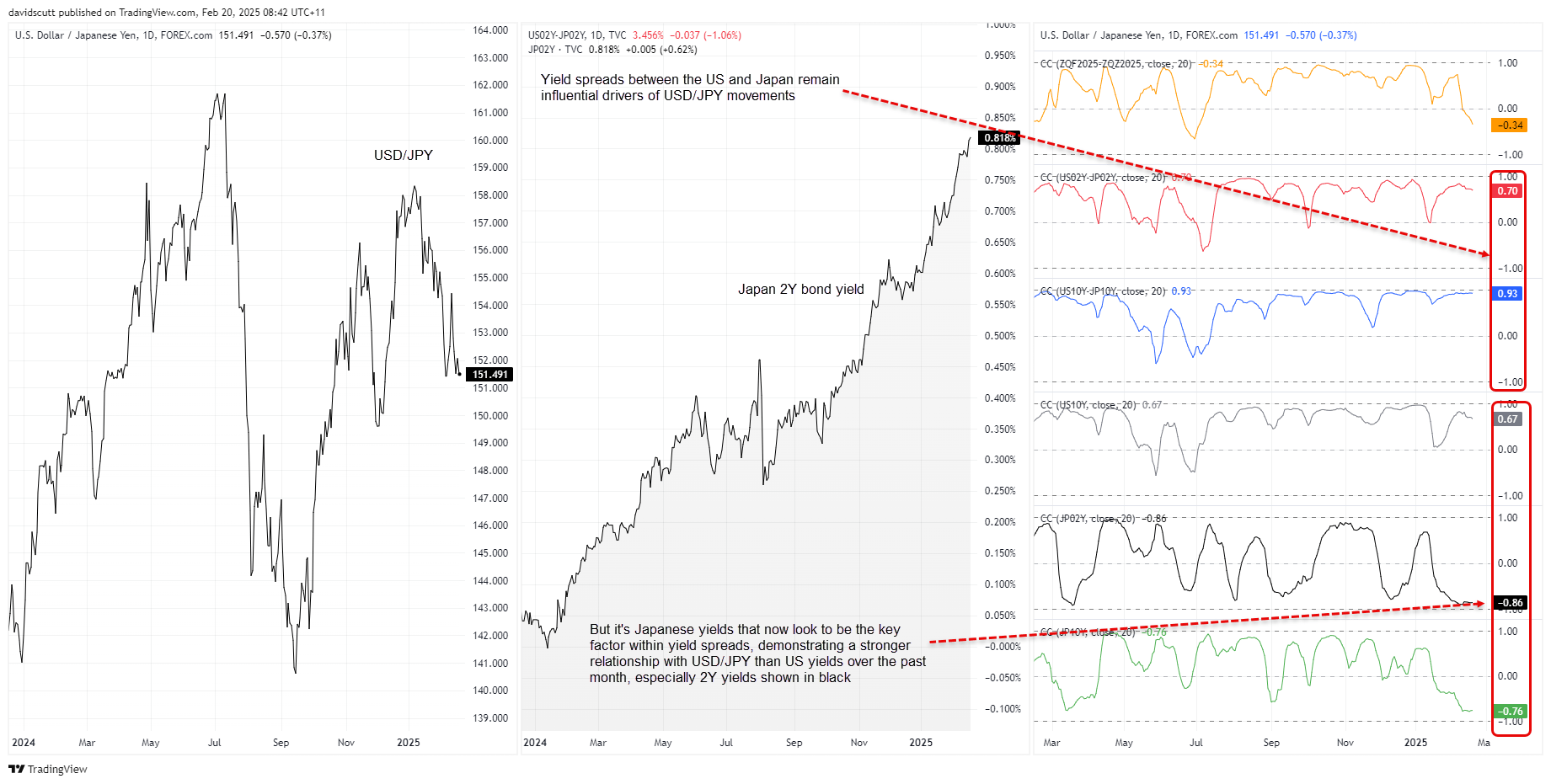
Source: TradingView
USD/JPY Technical Analysis
USD/JPY looks vulnerable to breaking support at 151, with the price coiling in an increasingly narrow range while repeatedly failing at downtrend resistance established in early January. Last week’s rejection was particularly sharp. Even with higher US Treasury yields this week, the pair has struggled to push far from 151—telling price action. A bearish engulfing candle on Wednesday further adds to the deteriorating setup for bulls. While RSI (14) has marginally diverged from price, setting higher lows recently, the signal is not enough to change the broader bearish picture, especially with MACD trending lower.
If USD/JPY were to break 151 convincingly, it may encourage a fresh wave of bearish wagers looking for an unwind to 148.65, the swing low hit in early December. On the topside, resistance may be encountered at 152.43, 153.38, and the January downtrend. They could be used to establish short positions if there was to be a short-term bounce.
If USD/JPY were to break through downtrend resistance, the bearish bias would be invalidated, opening the way for potential bullish setups.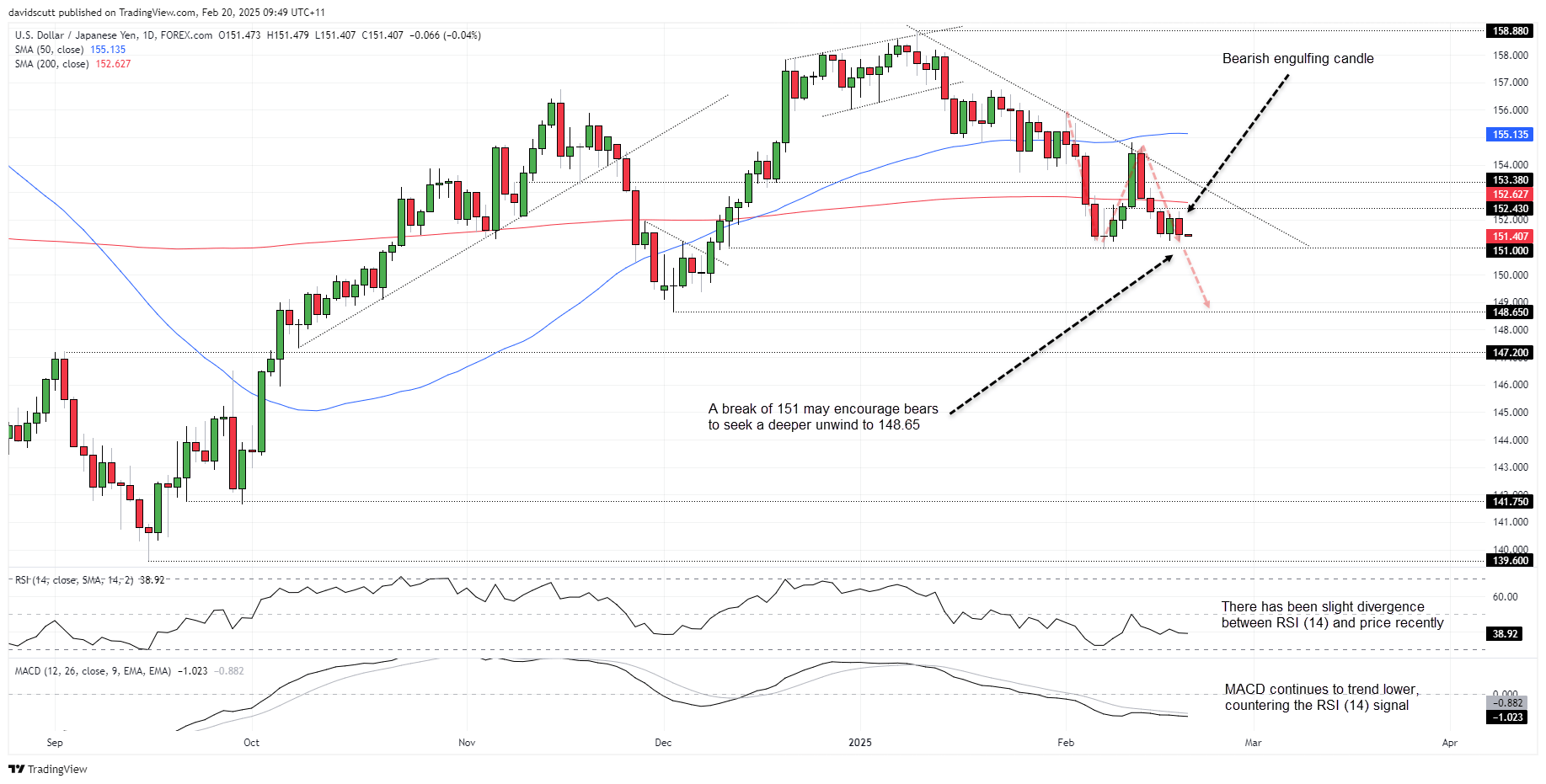
Source: TradingView
